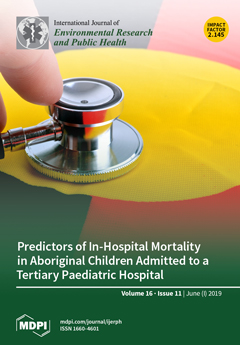With the advancement of urbanization, the harm caused to human health by PM
2.5 pollution has been receiving increasing attention worldwide. In order to increase public awareness and understanding of the damage caused by PM
2.5 in the air and gain the attention of relevant management departments, Changsha City is used as the research object, and the environmental quality data and public health data of Changsha City from 2013 to 2017 are used. All-cause death, respiratory death, cardiovascular death, chronic bronchitis, and asthma were selected as the endpoints of PM
2.5 pollution health effects, according to an exposure–response coefficient, Poisson regression model, and health-impact-assessment-related methods (the Human Capital Approach, the Willingness to Pay Approach, and the Cost of Illness Approach), assessing the health loss and economic loss associated with PM
2.5. The results show that the pollution of PM
2.5 in Changsha City is serious, which has resulted in extensive health hazards and economic losses to local residents. From 2013 to 2017, when annual average PM
2.5 concentrations fell to 10 μg/m
3, the total annual losses from the five health-effect endpoints were $2788.41 million, $2123.18 million, $1657.29 million, $1402.90 million, and $1419.92 million, respectively. The proportion of Gross Domestic Product (GDP) in the current year was 2.69%, 1.87%, 1.34%, 1.04% and 0.93%, respectively. Furthermore, when the concentration of PM
2.5 in Changsha City drops to the safety threshold of 10 μg/m
3, the number of affected populations and health economic losses can far exceed the situation when it falls to 35 μg/m
3, as stipulated by the national secondary standard. From 2013 to 2017, the total loss under the former situation was 1.48 times, 1.54 times, 1.86 times, 2.25 times, and 2.33 times that of the latter, respectively. Among them, all-cause death and cardiovascular death are the main sources of health loss. Taking 2017 as an example, when the annual average concentration dropped to 10 μg/m
3, the health loss caused by deaths from all-cause death and cardiovascular disease was 49.16% of the total loss and 35.73%, respectively. Additionally, deaths as a result of respiratory disease, asthma, and chronic bronchitis contributed to 7.31%, 7.29%, and 0.51% of the total loss, respectively. The research results can provide a reference for the formulation of air pollution control policies based on health effects, which is of great significance for controlling air pollution and protecting people’s health.
Full article





